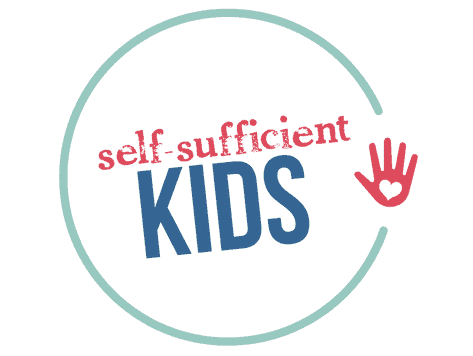Have a Disobedient Child? Four Steps to Address Your Child’s Behavior
Having a disobedient child can be frustrating, to say the least. Inside are four steps you can take to help address your child’s misbehavior and turn that behavior around.

Having a disobedient child is one of the most aggravating, irritating, stressful, and downright frustrating parenting experiences.
Especially if it seems our child is chronically disobedient: a child who will not listen to a thing we say, who opposes everything we tell them to do, and who frequently talks back and gets angry.
Their disobedience can cause us to stay awake at night wondering:
- What’s wrong with my child that they can’t simply do what I ask?
- Where have I failed as a parent to cause my child to behave so badly?
- Is it even possible to help my child do better?
These feelings of doubt and guilt are compounded when our child’s behavior is on full display at the playground or grocery store for everyone to witness.
The stares and looks of disapproval can make us feel humiliated and defeated.
But here’s what many parents don’t realize: disobedient children often have a number of emotions and feelings happening beneath the surface, causing their disobedience. These emotions and feelings aren’t always obvious at first or even seem logically connected to the behavior.
Once we find out what those feelings and emotions are, we can begin to work with our kids to help them behave better.
Because, ultimately, no child really wants to be disobedient. All kids want to feel better and as a result, behave better.
Getting to the root cause of kids’ disobedience
When we have a disobedient child – especially a child who’s constantly defying us – we can begin to suspect they’re just naturally that way. Maybe they simply have a bad temperament, we think, and need us to tame them to be obedient and good.
But kids often disobey for a reason. That reason usually derives from feeling confused, frustrated, or insignificant or from losing their sense of belonging in a certain group. It can also come from feeling they are not getting their emotional needs met.
These feelings may be linked to us, or they may be connected to other relationships in our kids’ lives such as peers or other significant adults.
And since kids don’t fully grasp these feelings themselves, or know how best to communicate what they’re experiencing, they instead act on them through disobedience and defiance.
Even if these confusing thoughts and emotions are generated by another relationship, kids may act out around us because they know we are their safe space and will love them unconditionally.
Maybe the reason for your child’s behavior isn’t at first obvious. Maybe it seems like your child is living the perfect life and shouldn’t have any reason to feel these emotions. If that’s the case, move on to the next steps and see if one of them reveals something you hadn’t considered.
Rest assured. Just because your child is constantly disobeying you, you are not a bad parent raising a bad human being. You simply have a confused child who needs your help and guidance.
Four steps to take when your child is disobedient:
If it’s now obvious what might be causing your child’s disobedience, or even if it’s still a mystery, these four steps can help address what’s going on to cause your child such confusion and emotion so you can begin to help them.
Sometimes the cause of the behavior goes deeper than simply wanting to stay at the park longer or feeling frustrated with what a sibling said or did, for example. It can be helpful to consider any changes in a child’s life that might be a deeper reason for their behavior and help them come to terms with those.
Step #1: Try to stay calm.
This may take a herculean effort on your part to achieve – especially if your child just threw a stapler across the room or cut a hole in her favorite shirt – but it’s also one of the most important steps.
When our kids’ emotions are so heightened and filled with confusion, they need us to model calmness in order for them to calm themselves. If, instead, we’re full of anger and rebuke them, our kids’ emotions will only tailspin and moving on to the next steps – which will get us closer to a solution – will be impossible.
Staying calm can be especially difficult when other people are watching. We want to demonstrate to other parents that we’re doing something (anything!) to address our child’s poor behavior. Otherwise, we think, they’ll see us as being permissive parents.
But permissive parents would not move on to the next steps of helping their child find a solution to their challenge or make it clear to their kids that their actions are unacceptable. Be confident that your calmness will help both you and your child in the long-run.
Step #2: Acknowledge the emotions you perceive your child is feeling.
As mentioned before, kids misbehave when they’re dealing with a number of confusing and frustrating emotions by responding to those emotions in inappropriate ways.
Although they don’t have the maturity to voice this, kids are looking for a safe and secure way to better understand these feelings and really want their parents (or other important adult in their life) to help.
We can send the message to our kids that we’re eager to help by first demonstrating that we see and empathize with the surface emotions they’re feeling in the current circumstances.
Phrases such as: “You’re disappointed we have to leave” or “You’re in the middle of playing and don’t want to get dressed” build a connection to our child’s thoughts and feelings.
When we build this connection to our kids, it creates a safe space for them to ponder and possibly express any other underlying emotions that may be bothering them – such as relationships at school or a parent who has been traveling for a long time.
By validating their feelings, we aren’t condoning any misbehavior (that will become clear in step #3). Only by connecting with our children first do we stand a chance of helping them do better.
Step #3: Respectfully point out that emotions are appropriate but some behavior and actions are not.
It’s important that kids make the distinction between how they feel and how they act.
It’s OK for our kids to feel angry, sad, frustrated, or upset. We all do from time to time! Repressing feelings can lead to stress, anxiety, and depression. So we, as our child’s parent and coach, want them to know that all feelings are acceptable.
What isn’t acceptable is taking those feelings and acting on them by throwing, hitting, disrespectfully talking back, or saying mean or hurtful things. Kids need to understand the distinction between feelings and actions. And they need help finding better, more productive ways to express their emotions.
Step #4: Provide young kids with suggestions; help older children problem-solve.
Since children younger than four are not developmentally ready to problem-solve, we can respectfully provide them with suggestions about better, more appropriate ways to express their strong emotions.
For example, we can say: “I know that puzzle is frustrating but it’s not OK to throw the puzzle pieces across the room. Instead, you could take a break or ask for help.”
With older children, it’s possible to ask them to problem-solve a solution to what they’re feeling and choose better ways to express their emotions. Getting them involved in creating a solution makes them feel a greater sense of ownership over it.
For example, we can ask kids questions such as: “Can you think of a more appropriate way to demonstrate your frustration with your brother?” or “What is a better way to show your anger than to throw your food on the floor?”
It’s also reasonable to let kids know our standards. For example, we can say: “I understand that you’re very angry with me but I don’t talk to people who are yelling at me. We can discuss your frustration once you take time to calm down.” And then help the child calm down if they need that help.
It isn’t easy but long-term it’s worth it
Using the four steps of calming down, validating feelings, separating feelings from actions, and finding better solutions isn’t easy but the more we practice these techniques, the more our child will grow to find better means and ways to express their emotions.
We’ll be helping them by growing their emotional intelligence. And – believe it or not – helping ourselves because children who begin to understand how to behave better and act better make it easier to parent them.
And most importantly, we’re building a bridge to our children’s hearts, strengthening our relationship with them, and coaching them toward being the best version of themselves.
We’ll also find that as our children leave our nests, they’ll be able to use these skills to have better and more productive adult relationships with friends, teachers, spouses, co-workers, and employers.
See also:
How to Discipline Kids While Reaching Their Heart at the Same Time
Why Your Misbehaving Child Won’t Stop and What to Do About it
Why Consequences Aren’t Working to Change Your Child’s Misbehavior (and What Will)
The Difference Between Punishment and Discipline and Why it Matters
What to do next…
1. Subscribe to Self-Sufficient Kids’ email list.
Like what you read here and want to learn more? Every Thursday I’ll send you one parenting tip about raising self-sufficient kids and creating the peaceful relationship you yearn to have with your child. Click here to sign up.
2. Take one of my quizzes!
Find out if you’re raising a self-sufficient kid (click here) or if you’re doing too much for your kids (click here). At the end of each quiz, you’ll be asked to provide your email address to see the results.
3. Get your kids started on chores.
Learn how to get your child started on chores (& keep them motivated + avoid power struggles) by enrolling in my Get Your Kids Successfully Started on Chores course. Click here to learn more and sign up.

About Kerry Flatley
Hi! I’m Kerry, the mother of two girls and a certified parent educator. I believe it is possible for parents to have a supportive, loving, and warm relationship with their kids while raising them to be independent and ultimately self-sufficient. Over the years, I’ve read numerous books and articles that support this belief and I’ve put these ideas into practice with my own kids. Read more about me and Self-Sufficient Kids here.


